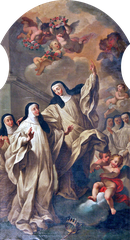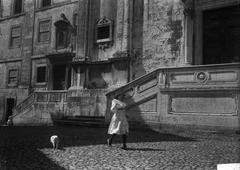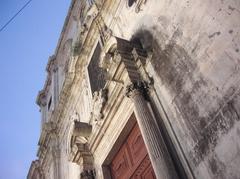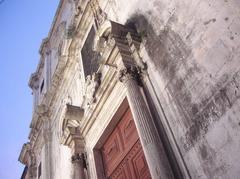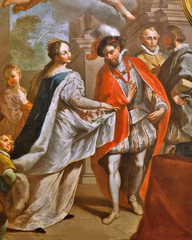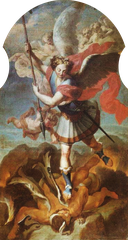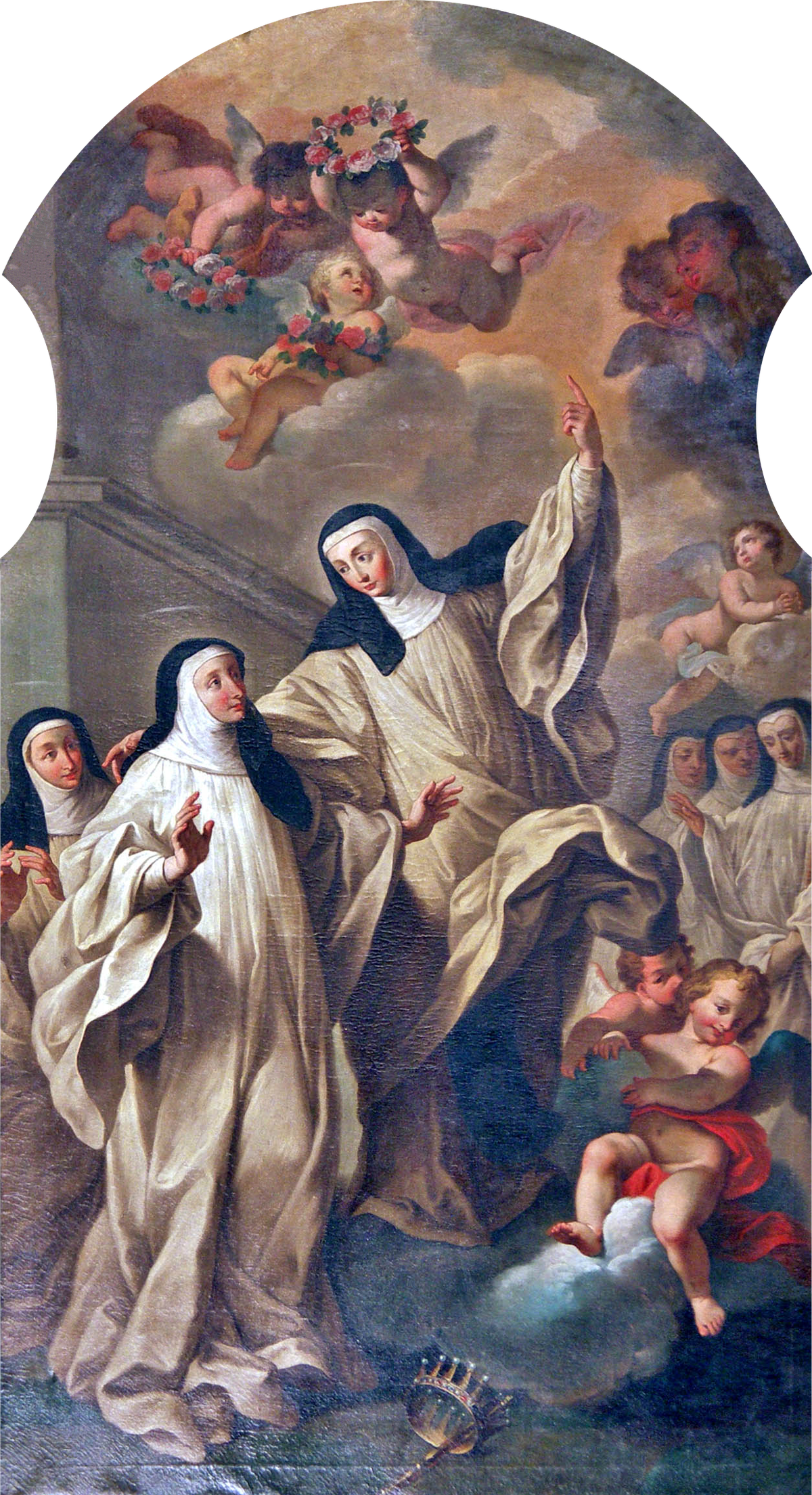
Igreja do Menino Deus: Visiting Hours, Tickets, and the Essential Guide to Lisbon’s Baroque Treasure
Date: 14/06/2025
Introduction
Nestled in Lisbon’s atmospheric Alfama district, the Igreja do Menino Deus (Church of the Divine Infant) stands as one of Portugal’s purest Baroque masterpieces and a testament to the city’s enduring religious and royal traditions. Founded in the early 18th century under the patronage of King João V and Queen Maria Sofia de Neuburgo, this church uniquely combines spiritual devotion, artistic innovation, and historical resilience. Despite the devastation of the 1755 earthquake, the church survived with minimal damage, preserving one of Lisbon’s most authentic Baroque interiors (Monumentos SIPA).
This guide offers comprehensive visitor information, including accurate details on visiting hours, ticketing, guided tours, accessibility, and tips for exploring both the church and its surrounding historic neighborhoods. Whether you are an art lover, history enthusiast, or spiritual pilgrim, this resource will help you uncover the significance and beauty of one of Lisbon’s hidden gems (Quo Vadis Lisboa, LisbonLux).
Table of Contents
- Introduction
- Historical Background & Foundation
- Architectural and Artistic Highlights
- Religious and Cultural Significance
- Visitor Information: Hours, Tickets, Accessibility, and Tours
- Getting There and Nearby Attractions
- Frequently Asked Questions (FAQ)
- Summary and Visitor Recommendations
- References
Historical Background & Foundation
The Igreja do Menino Deus was established in 1711 as an expression of royal gratitude and dynastic hope, following Portugal’s Restoration War and the birth of a much-awaited heir, the future King João V. The church’s location in the Santa Maria Maior parish (Santiago) underscores its importance in Lisbon’s spiritual and civic life (Monumentos SIPA). It quickly became a center of devotion, particularly for the cult of the Christ Child, which gained prominence in 17th- and 18th-century Portuguese Catholicism (Lisboa Secreta).
Architectural and Artistic Highlights
Exterior and Structure
Designed by João Antunes and later completed by João Frederico Ludovice, the church exemplifies Baroque architecture with an octagonal plan—an unusual feature in Lisbon’s religious buildings (baroqueart.museumwnf.org). The restrained stone façade, with its elegant pilasters and triangular pediment, stands in contrast to the opulent interior.
Interior Decoration
The church’s interior features:
- Gilded Woodwork (Talha Dourada): Lavish, gold-leafed carvings frame the main altar and chapels, exemplifying 18th-century Portuguese Baroque craftsmanship (timetravelturtle.com).
- Polychrome Marble: Richly colored marble is used throughout, notably in the chancel and flooring.
- Azulejo Panels: Blue-and-white ceramic tilework depicts biblical scenes and saints, serving both decorative and didactic purposes.
- Trompe-l’oeil Ceilings: Illusionistic painting creates a sense of grandeur and celestial space.
- Altarpieces and Paintings: Works by artists such as Vieira Lusitano, André Rubira, and André Gonçalves illustrate key religious themes (baroqueart.museumwnf.org).
- Sculptures: Statues of angels and saints, attributed to master sculptors of the period, are integrated with the church’s ornamental program.
Architectural Symbolism
The church’s layout and rich decoration are designed to evoke transcendence, with light, color, and perspective drawing visitors’ attention heavenward. The central image of the Menino Deus (Child God) reflects Lisbon’s tradition of devotion to the Christ Child, inviting contemplation and prayer (guiadacidade.pt).
Religious and Cultural Significance
Throughout its history, the Igreja do Menino Deus has played a vital role in Alfama’s religious life, serving as a center for liturgical celebrations, processions, and community charity. Its annual feast day draws worshippers from across the city. The church’s association with royal patronage and miraculous traditions further elevates its status as a site of pilgrimage and reflection (Lisboa Secreta).
Visitor Information: Hours, Tickets, Accessibility, and Tours
Visiting Hours
- By Appointment Only: The church does not have regular daily visiting hours to protect its delicate interior. Visits must be arranged in advance by contacting the church administration at +351 218 863 535 or through the official website.
- Special Events: Public access may be available during religious festivals or special Masses—check with local tourism offices or the church directly before your visit.
Tickets and Entry
- Admission: Entry is generally free, though donations to support conservation are appreciated. Guided tours, when available, may carry a nominal fee.
- Guided Tours: Private or small-group tours can be arranged with advance notice, offering in-depth insights into the church’s art, architecture, and history.
Accessibility
- Physical Access: Located on a slope in Alfama, access can be challenging for visitors with mobility impairments. The church’s historic structure offers limited accessibility features, and the surrounding cobblestone streets may be uneven.
- Facilities: There is no dedicated parking; public transportation or walking is recommended.
Visitor Tips
- Advance Booking: Always schedule your visit ahead of time.
- Dress Code: Modest attire is expected.
- Photography: Non-flash photography may be permitted, but always check with staff.
- Combine with Nearby Sites: Plan to visit other Alfama attractions for a richer experience.
Getting There and Nearby Attractions
Location
- Address: Calçada do Menino de Deus, 1100-346 Lisbon, Portugal
- Transport: Accessible by tram 28, which passes nearby, or by foot from São Jorge Castle and Lisbon Cathedral.
Nearby Historical Sites
- São Jorge Castle: Panoramic views and centuries of history.
- Lisbon Cathedral (Sé de Lisboa): The city’s oldest church.
- National Pantheon and Monastery of São Vicente de Fora: Both within a short walk.
Frequently Asked Questions (FAQ)
What are the visiting hours?
Visits are by appointment only. Contact the church to schedule.
Is there an entrance fee?
Generally no, but donations are welcome; guided tours may have a nominal fee.
Are guided tours available?
Yes, by prior arrangement.
Is the church wheelchair accessible?
Accessibility is limited; contact ahead to discuss specific needs.
Is photography allowed inside?
Policies vary; generally, flash is not permitted.
How do I get there?
By tram (28), on foot from central Alfama, or by public transport.
Summary and Visitor Recommendations
The Igreja do Menino Deus offers a rare and authentic glimpse into Lisbon’s Baroque past. Its artistic treasures, remarkable resilience, and intimate atmosphere make it a rewarding destination for those seeking deeper cultural and spiritual experiences. Plan carefully—appointments are required—and consider combining your visit with other Alfama highlights. For up-to-date details, rely on official sources and local tourism offices (Monumentos SIPA, Quo Vadis Lisboa, Lisboa Secreta).
References
- Monumentos SIPA – Igreja do Menino Deus
- Baroque Art in Portugal: Igreja do Menino Deus
- LisbonLux: Most Beautiful Churches in Lisbon
- Quo Vadis Lisboa: Igreja do Menino Deus
- Lisboa Secreta: Lisbon’s Hidden Churches
For more travel tips, download the Audiala app and follow us on social media for the latest updates on Lisbon’s historic sites and cultural events.
